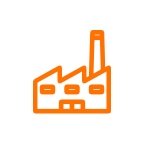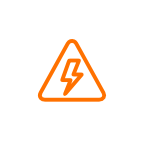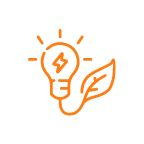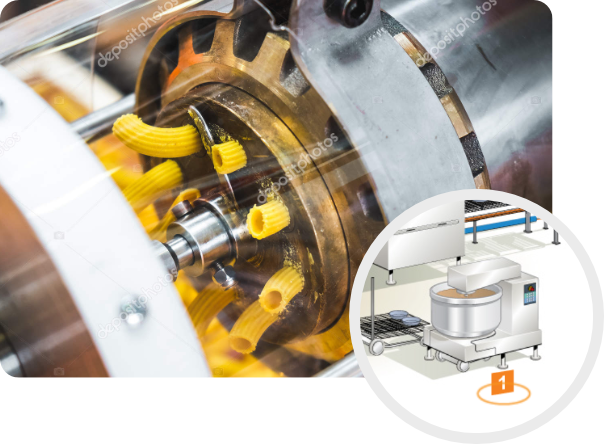Overview
Driven by Internet of Things (IoT) technologies, increasing government and private sector activities, and rising security concerns, the global building automation systems market size is expected to reach a monumental US$96,264 million by 2033.
Reshaping diverse industries, the COVID-19 crisis eventually spurred the adoption of technologies within the built environment to enhance health, safety, and operational efficiency, in anticipation of future uncertainties.
These changes highlight the growing awareness of the importance of intelligent and resilient building infrastructure in the drive towards innovation for smart cities, and in meeting unforeseen challenges.
Building automation systems may have the potential to maximise the performance of your facility, but it all starts with having a reliable cable foundation to ensure communication between devices and a scalable cabling solution that can grow with your business.

Streamlining Buildings, Unifying Expertise:
Achieving Automation Excellence Together
Effective building automation implementation necessitates a meticulously designed, integrated system tailored to the building’s unique requirements. Collaboration among architects, engineers, integrators, and stakeholders is essential to achieve a comprehensive solution.
At the heart of building automation are critical components and factors propelling the system forward
Sensors
and Actuators
Capture data on temperature, humidity, occupancy, lighting and more.
Robust Communication
Network
Create a strong network infrastructure for rapid data exchange.
Scalability
and Flexibility
Future-proof with adaptable, user-friendly interfaces for expansion and technological advancements.
Centralised Control
Systems or Building
Management
System (BMS)
Manage and optimize integrated HVAC, lighting, and security systems.
Safety and Risk
Management
Integrate halogen-free systems for enhanced safety and sustainability for evolving demand.
Smart Building
Industry 4.0 has arrived. In this new industrial revolution where the Internet of Things technology is used to facilitate communication between machines and systems along the entire value chain, you can look forward to a smart building that are more sustainable, efficient and cost effective. Machine interoperability starts here.
In the face of ever-increasing energy costs and growing competition, occupiers and owners are demanding more from their building assets. This is where smart buildings come in, as they can be operated and managed more cost effectively. With greater control and the appropriate use of automation, smart buildings can also be more energy efficient. At the core of any smart building is a building system that is able to orchestrate the operations of the various systems used throughout a building. By having the systems ‘talk’ to one another, performance is optimised.
Shielded data cables help minimize interference between critical building systems, ensuring a safer, more energy-efficient environment.
At JJ-LAPP, we believe that smart buildings are not created overnight. Whether we’re working with new or existing buildings, we prefer to take a long-term perspective and incorporate smart building capabilities over. We work closely with a community of solution providers, using our cabling solutions and technologies as the building blocks to develop an ecosystem of smart building solutions for you.
Energy Management
Safety System
Operational Efficiency
Subsystem
Security Management /
Access Control
Discover LAPP’s connectivity portfolio
for Building Infrastructure from one source
Where BMS integrates technology, sensors, and control systems to monitor and manage various building functions,
LAPP provides universal network wiring from the control level right down to the peripherals.
Ensure reliable BMS data transfer with our shielded Data Cables, reducing interference in multi-system buildings.
ACMV & Energy Management
A building air conditioning and mechanical ventilation, energy and climate management system are placed to monitor and manage energy demand and climate condition in buildings. Intelligent management allows energy to be used effeciently while maintaining an optimised climate condition for the occupants.






CATV Cable Vision
Community Antenna Television works in areas where over-the-air reception was limited by distance from transmitters or mountainous terrain, large “community antennas” were constructed, and coaxial cable used to carry cable television into subscriber’s residences.






Fiber Optic System
Optical fibers are widely used in fiber-optic communications, where they permit transmission over longer distances and at higher bandwidths with less loss signals and also immune to electromagnetic interference. Lapp Group specially designed fibers are used for a variety of other applications, including sensors and fiber lasers.






Structured Cabling
Structured cabling is a set of cabling and connectivity products that integrates voice, data and video services. Structured cabling design and installation is governed by a set of standards that specify wiring data centers, offices and apartment buildings for data or voice communications using various kinds of cable, most commonly category 5e (CAT.5e), category 6 (CAT.6) and fibre optic cabling and modular connectors.




Automated Warehousing
The automated warehouse system improves the efficiency of logistics operations. Logistics automation systems can powerfully complement the facilities provided by higher level computer systems. Automated production processes require data transmission cables that offer high flexibility and durability, as well as excellent screening.










EV Charger (e-Mobility Solutions)







Solar Photovoltaic
Photovoltaics (PV) is a method of generating electrical power by converting solar radiation into direct current electricity. Photovoltaic power generation employs solar panels composed a number of cells containing a photovoltaic material. Materials presently used for photovoltaics include mono crystalline silicon, amorphous silicon, cadmium telluride, and copper indium selenide/sulfide.
UV-resistant cables provide long-lasting connectivity for rooftop solar panel arrays exposed to outdoor conditions.






Power Supply & Welding
In civil engineering generators are used to supply electrical power in places where utility (central station) power is not available, or where power is needed only temporarily. Small generators are sometime used to supply power tools at construction sites. Trailermounted generators supply power for temporary installations of lighting in train tunnels, welding equipments, sound amplification systems, amusement rides etc.






Keep HVAC and lighting systems running smoothly using our durable Power Cables.
Safety Detection
A critical life safety system is designed with low smoke halogen free cables; particularly in areas where mass human traffic is present like home, hospital, train station, shopping mall and airport.






Fire Alarm System
A fire alarm system in a building is designed to detect unwanted presence of fireby monitoring environmental changes associated with combustion. In a event of an emergency, the system provides and visual alert for the occupants to escape safely.








Lift & Escalator
Fast reaction and processing times depend on a high degree of flexibility. Handling processes must run smoothly and cost-effectively. Every link in the process chain must operate reliably as the weakest link determines the reliability of the whole system. Cables and their corresponding accessories play an important role in this.










Automated Car Park Management
A car park management system provides real-time indication of the number of parking lots available in the entire and various level / zone of the card park; and assists the driver in locating the available lot through user friendly directional guiding signage display. Individual lot sensor with LED lamp indicator further enhance the lot counting and directional guiding services.










CCTV, Security & Access Control
A security and access control system provides a building with the ability to track and restrict access to it’s facilities. Access rights can be reprogrammed in an instance. Video surveillance continuously monitors and records all activities in the building while the alarm monitoring system detects break-ins, flood waters and harmful gases.








CCTV, Security & Access Control
A security and access control system provides a building with the ability to track and restrict access to it’s facilities. Access rights can be reprogrammed in an instance. Video surveillance continuously monitors and records all activities in the building while the alarm monitoring system detects break-ins, flood waters and harmful gases.








Battery Energy Storage System (BESS)







Splash Zone
Drips or splashes of food could return to the food manufacturing process, causing
contamination

- For direct and permanent contact with food
- In or near the food manufacturing process
- Drips or splashes of food could return to the food manufacturing process, causing contamination
- Areas that need to be washed down
- Assess the risk of food returning to the manufacturing process
- Recommended to use materials that are able to withstand (chemicals, acids, alkalis, hot water)
- Consider the following factors: temperature range, chemical resistance, mechanical strength, flexibility

Non-Product Zone
No contact with food

- Conveyor belt for packaged products
- Consider the following factors: temperature range chemical resistance, mechanical strength, flexibility
Contact Us
Have questions or need assistance? Our dedicated team is here to help! Reach out to us today for personalised support and expert guidance on all your connectivity needs.